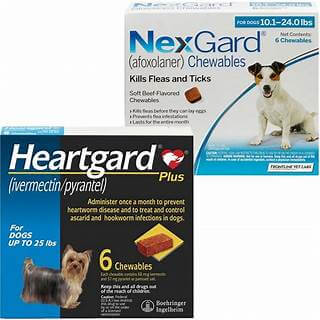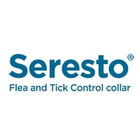
Just like humans, dogs can develop painful swellings under the skin or around the gums, known as abscesses. These pus-filled lumps are often a sign that your pet’s body is fighting an infection. While abscesses can look alarming, most are treatable when detected early. Knowing the causes, recognizing the symptoms, and seeking timely veterinary care are essential steps to ensure your dog heals safely and comfortably.
What Is an Abscess in Dogs?
A dog abscess is a pocket of pus that forms beneath the skin or inside the body in response to an infection. It’s the body’s way of walling off harmful bacteria to stop them from spreading.
Abscesses are typically caused by:
- Bite wounds from other animals (especially cats or other dogs)
- Cuts, scratches, or punctures that become infected
- Dental infections, such as infected gums or tooth roots
- Blocked glands, such as the anal glands near the rectum
Because bacteria thrive in warm, moist areas, even a small wound can develop into a large abscess if left untreated.
Common Areas Where Abscesses Occur
Abscesses can form anywhere, but some areas are more common:
- Skin abscesses: Often on the face, neck, or legs — common after fights or injuries.
- Tooth or gum abscesses: Usually inside the mouth or around the jawline, causing pain while eating.
- Anal gland abscesses: Found near the base of the tail; may cause scooting or licking.
- Internal abscesses: Less visible but can form in organs like the liver, lungs, or abdomen.
Signs and Symptoms of an Abscess in Dogs
Some abscesses are obvious, while others are hidden under fur or deep inside the body. Look out for these signs:
- Swelling or a lump under the skin
- Warmth and redness in the affected area
- Pain or sensitivity when touched
- Oozing pus or fluid with a foul odor
- Lethargy and loss of appetite
- Fever or shivering
- Excessive licking or chewing at one spot
If your dog suddenly seems uncomfortable, avoids being touched, or develops a swollen bump, it’s best to visit your veterinarian.
What Causes Abscesses in Dogs?
Bite or Scratch Wounds:
When a dog gets bitten or scratched, bacteria from the other animal’s mouth or claws can enter the wound. The skin may close over the bacteria, trapping them inside and creating an abscess.
Poor Dental Health:
Tooth decay or gum disease allows bacteria to travel deep into the tooth roots or jaw, forming a painful abscess.
Blocked Anal Glands:
Anal glands help dogs mark territory. When they get clogged, they can become infected, leading to painful swelling and abscess formation near the anus.
Foreign Objects:
Splinters, thorns, or grass seeds that pierce the skin can carry bacteria and cause infection.
Weakened Immune System:
Dogs with diabetes, Cushing’s disease, or other immune conditions are more prone to infections.
How Vets Diagnose a Dog Abscess
Your veterinarian will conduct a thorough physical examination and may suggest additional diagnostic tests, including:
- Fine needle aspiration: Drawing fluid from the lump to check for bacteria.
- Blood tests: Help determine whether the infection has entered the bloodstream or affected other organs.
- Dental X-rays: If a tooth abscess is suspected.
- Ultrasound or imaging: For internal abscesses.
These tests help confirm the infection type and identify the proper treatment.
Treatment for Dog Abscesses
Treatment depends on the abscess’s size, location, and severity. Common approaches include:
Draining the Abscess
The vet will make a small incision to release trapped pus. This reduces pressure and allows healing to begin. Avoid attempting to pop or drain an abscess at home, as it can aggravate the infection and delay healing.
Cleaning the Wound
The area is cleaned thoroughly with antiseptic solutions. Sometimes a small drain is left in place for a few days to allow fluids to escape.
Antibiotic Therapy
Your vet may prescribe antibiotics to eliminate the bacteria responsible for the infection. Always complete the full course even if your dog seems better.
Pain Relief and Anti-Inflammatories
To ease discomfort and swelling, painkillers or anti-inflammatory medicines may be prescribed.
Home Care and Monitoring
Keep the wound clean and dry. Follow your vet’s instructions for cleaning and rechecking. Use an e-collar (cone) to stop your dog from licking or biting the wound, allowing it to heal properly.
How to Prevent Abscesses in Dogs
While some abscesses can’t be avoided, you can lower your dog’s risk by following a few preventive steps:
- Regular grooming and inspection: Check your dog’s skin for wounds, especially after walks or playtime.
- Keep up with dental care: Brush your dog’s teeth regularly and schedule annual dental cleanings.
- Maintain anal gland hygiene: Have your vet check and express them if needed.
- Avoid fights or rough play: Keep your dog on a leash in unfamiliar environments.
- Use flea and tick prevention: Parasite bites can lead to skin infections that develop into abscesses.
When to See a Vet
You should contact your veterinarian immediately if:
- The swelling grows rapidly or becomes very painful.
- Your dog develops a fever, stops eating, or appears lethargic.
- There’s pus, bleeding, or a foul odor from the lump.
- The abscess bursts — it still needs professional cleaning and medication.
Quick treatment not only prevents the infection from spreading but also helps your pet heal faster.
Recovery and Outlook
Most dogs recover well after proper treatment. Healing usually takes one to two weeks, depending on the abscess’s size and location. Internal abscesses or those caused by deep infections may take longer to resolve. Following your vet’s care instructions and completing the full medication course are essential for complete recovery.
Final Thoughts
A dog abscess might look frightening, but with timely veterinary care, your furry friend can make a full recovery. Consistent grooming, proper dental care, and routine parasite protection are vital for preventing infections and keeping your dog healthy. If you notice any swelling, discharge, or pain, don’t wait — early treatment makes all the difference.






